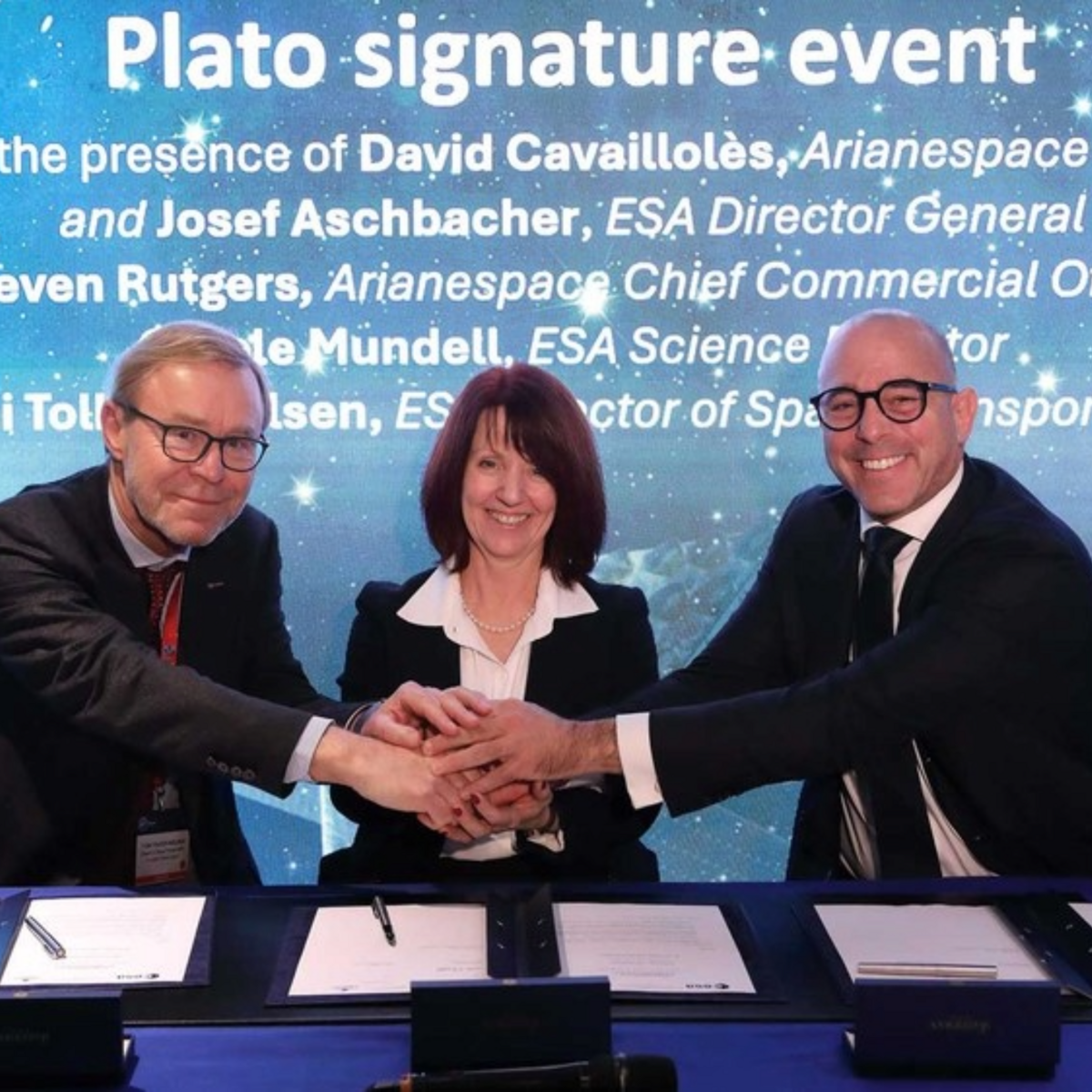ESA Mission PLATO: Search for Earth-Like Planets
On January 29, 2025, the launch agreement for the ESA mission PLATO was signed. The official signing ceremony took place at the European Space Conference in Brussels, attended by Carole Mundell, Director of Science at the European Space Agency (ESA), ESA Director of Space Transportation Toni Tolker-Nielsen, and Arianespace Chief Commercial Officer Steven Rutgers.
PLATO (PLAnetary Transits and Oscillations of stars) is a groundbreaking ESA science mission dedicated to the search for Earth-like exoplanets. The launch is scheduled for late 2026 aboard an Ariane 6 rocket from the European spaceport in French Guiana.
The German Aerospace Center (DLR) plays a key role in the mission. It leads the PLATO payload consortium and has developed critical components for the camera electronics and data processing. Funding for Germany’s contribution to PLATO is provided by the German Space Agency at DLR, with support from the Federal Ministry for Economic Affairs and Climate Action (BMWK) and the Max Planck Society.
PLATO: A New Era in Exoplanet Research
PLATO's primary objective is to identify Earth-like planets within the Milky Way galaxy that orbit Sun-like stars, with the potential to support life.
The spacecraft is being built by a consortium of industrial partners led by OHB Bremen, in cooperation with Thales Alenia Space and Beyond Gravity.The Max Planck Institute for Solar System Research in Göttingen will operate the PLATO Data Center, which will be responsible for processing and calibrating the scientific data.
PLATO's innovative design sets it apart from other spacecraft. Rather than a single large telescope, it will be equipped with 26 individual cameras mounted on an optical platform, allowing for the simultaneous observation of a wide section of the sky. This configuration will enable the detection of even the smallest brightness fluctuations of stars.
Technology and Scientific Goals of PLATO
PLATO will use the so-called transit method to detect exoplanets. This method relies on the slight dimming of a star's brightness when a planet passes in front of it. The mission will observe over 200,000 stars using its 26 cameras, which will cover overlapping fields of view.
"This mission will bring us closer to answering one of humanity’s greatest questions: Has life also developed on other planets?" says Prof. Heike Rauer from the DLR Institute of Planetary Research and Freie Universität Berlin, who leads the scientific consortium for the PLATO mission.
Ariane 6: Europe’s Powerful Heavy-Lift Rocket
PLATO will be launched aboard an Ariane 6 rocket, Europe's latest-generation heavy-lift launch vehicle. The rocket features an improved core stage, multiple booster configurations, and a new restartable upper stage.
The inaugural flight of the Ariane 6 rocket was successfully completed in July 2024, with a subsequent launch scheduled for February 2025. This initial launch sequence is part of a broader plan to increase the frequency of launches, thereby strengthening Europe's autonomy in space transportation.
Lagrange Point 2: Why This Location Is Ideal
PLATO will be positioned at Lagrange Point 2 (L2), a point in space located approximately 1.5 million kilometers from Earth, along the extended Earth-Sun line. At this location, the gravitational forces of the Sun and Earth balance out in a way that allows satellites to remain in a stable position with minimal fuel consumption.
This makes L2 an ideal location for space telescopes, as they can operate free from Earth’s radiation while maintaining an uninterrupted view into deep space. The James Webb Space Telescope was also launched to L2 in 2021 aboard an Ariane 5 rocket. The continuous observation conditions at this point make it a prime location for precise astronomical research.
Source: DLR press release “PLATO mission to launch in late 2026 onboard Ariane 6”; Jan 30, 2025
Aerospace in the Airport Region
The capital region is one of Germany's top aerospace technology locations. Engine development and production, light aircraft construction, and aircraft maintenance and repair are the core competencies of companies based here, including global players such as Rolls-Royce Deutschland, MTU Maintenance, and Lufthansa. The region is not only the cradle of German aviation, but also a location with a future, providing innovative impulses through the development and use of unmanned flight systems, the production of small satellites and the new space sector.
For further information on the economic development of growth sectors in the region and on business and technology promotion for companies, investors and scientific institutions, please contact
